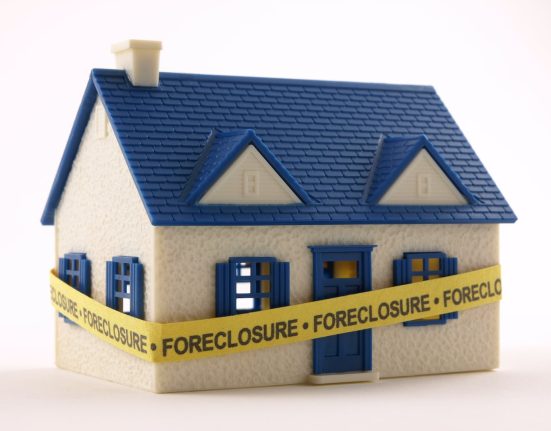On its face, it’s a simple solution to a simple problem — many people are struggling to get home loans big enough to afford a property, so why not relax the rules around how much people can borrow?
That’s what the Coalition is proposing to do, should it win the federal election on May 3.
But, first things first. What exactly is the “mortgage serviceability buffer” the Coalition plans to lower?
How the mortgage buffer works
When you apply for a mortgage, the lender is under a legal obligation to make sure that any home loan it approves is “not unsuitable”, given your financial circumstances.
In plain English, that means they need to check that you should be able to afford the repayments now and over the life of the loan without suffering financial hardship.
That’s why lenders will ask you for details and proof about your income, expenses, existing debts, investments and more when you apply for a loan.
In addition to this, banks and credit unions also have to follow rules from their regulator, APRA — the Australian Prudential Regulation Authority.
APRA’s primary job is to ensure that the financial system is secure and that the money depositors put into their savings accounts are safe — in other words, that banks, building societies and credit unions are not at risk of collapse.
One of the rules it has in place is an interest rate buffer when these lenders assess your mortgage application.
At the moment, that buffer is 3 percentage points. That means if the loan you are applying for has a current interest rate of 6 per cent, the bank must test if you could still afford the repayments if the rate rose to 9 per cent.
The idea behind this is that most mortgages run for 25-30 years and, as we have recently rediscovered, interest rates can change quite dramatically over time.
What is the Coalition planning to do if elected?
The Coalition says that this buffer is too high, given that interest rates look likely to have peaked and are on the way down.
“I think most Australians could understand a high serviceability buffer when the cash rate was 0.1 per cent during COVID,” Shadow Housing Minister Michael Sukkar told Radio National Breakfast.
“But now that we have elevated interest rates, a serviceability buffer that has not remained flexible with those changes is just blocking first home buyers from entering the market.“
He argued that first home buyers were particularly affected, given that they had no existing home equity and lower savings than older, more established households.
“Estimates from the industry are that nearly 40 per cent of potential first home buyers are not able to get finance for a loan, and therefore unable to buy a house, because primarily that serviceability buffer is now at 3 per cent,” Mr Sukkar said.
He wouldn’t be drawn further on the details of any change but, when pressed, suggested that the reduction might be modest.
“Two-and-a-half per cent is where it was at previously,” he responded.
“So we’re going to work with APRA in relation to that, as we did, to be frank, in the former Coalition government.”
Has the buffer always been this high?
The short answer is no, but it’s more complicated than that.
The buffer was 2.5 per cent between mid-2019 and late-2021, at which point APRA raised it to 3 per cent because it was growing increasingly concerned by the home lending and house price boom sparked by the Reserve Bank’s emergency COVID-level cash rate of just 0.1 per cent.
As I outlined in this December 2022 analysis, APRA’s move to raise the buffer was arguably shutting the door after the horse had bolted.
The door that APRA belatedly shut was opened in the first place by the Morrison Coalition government, as Mr Sukkar referred to above, which oversaw APRA removing a floor on the mortgage serviceability test.
What was this floor?
It was set at a minimum of 7 per cent at a time when the buffer was only 2 percentage points but it meant that, no matter how low interest rates fell, borrowers would have to at least be tested on whether they could afford their mortgage at a 7 per cent interest rate.
As explained in that 2022 analysis, its removal meant that when interest rates plunged during COVID-19 and many people could get a loan at interest rates below 2 per cent, those borrowers were only being tested against a rise in mortgage rates to 4.5 or 5 per cent.
After the Reserve Bank finished hiking rates in November 2023, the average variable mortgage rate on outstanding owner-occupier loans was 6.3 per cent — a lot higher than many borrowers from 2020 and 2021 had been tested against.
So are there options to cut the buffer but still protect borrowers?
While no-one expects mortgage interest rates to fall back to 2 or even 3 per cent again, no-one expected them to fall that low in the first place until COVID-19 hit.
The lack of an interest rate floor on the serviceability test after mid-2019 meant that a bunch of borrowers ended up with loans they couldn’t afford, triggering a steep rise in mortgage hardship and property sales when interest rates rose sharply.
So, with the Coalition saying that final details of any change to the mortgage serviceability test would be negotiated with APRA, this would offer an opportunity to lower the buffer but reintroduce a floor.
The average discounted “indicator” owner-occupier variable lending rate over the roughly two decades the Reserve Bank data goes back is 5.74 per cent, so quite close to current levels.
There have been 60 out of 250 months, or close to a quarter of the time, when the average discounted variable rate has been above 7 per cent.
So that makes a 7 per cent floor actually look quite risky.
In that 20-year period, there were just nine months — in the lead-up to the global financial crisis in 2008 — when variable home loan rates were typically above 8 per cent.
So, perhaps it wouldn’t be a bad idea to bring the mortgage serviceability buffer back to 2.5 or even 2 percentage points, but with a 7.5 or 8 per cent floor on the test.
This would give prospective home buyers extra borrowing capacity in the short term, but safeguard against risky credit booms if rates dropped back to low levels in the future.
While reducing the buffer might spark a temporary uplift in home prices, the reintroduction and maintenance of a higher floor would prevent the kind of cheap credit-induced house price booms we saw during COVID-19, when interest rates fall to unusually low levels.
Loading
Will the Coalition’s policy make housing more affordable?
Quite simply, no. In fact, the opposite.
While lowering the mortgage serviceability buffer will allow first home buyer X to borrow more, it will also allow potential buyers Y and Z to borrow more too.
Unless the reduced floor is only for first home buyers, then Y and Z might be upgraders or investors.
If all three turn up at the same auction, they will be able to bid more for the property than before the serviceability buffer was lowered.
The most likely result is that the home will sell at a higher price.
Replicated across the whole housing market, the almost inevitable result is that home prices will rise.
Housing will become less, not more, affordable and most of the people who were locked out of the market before will remain locked out of the market.
In the end, it is not solely the size of loan you can get that determines whether you can buy, but whether that loan is big enough to pay the current market price for the home you want.
A policy that increases the capacity to pay, what economists call a “demand side” policy, will, other things being equal, simply result in higher prices.
If the supply side was more responsive, that might limit the price increase by seeing that extra demand channelled into more home building.
But, let’s face it, even with fewer planning restrictions, it’s not exactly quick to build a lot more housing, as governments around Australia should have learned over the past few years. So prices would jump in the short term before construction could catch up.
Loading…
And we don’t need hypothetical economic models to tell us this.
After APRA introduced stricter lending rules, the Australian property market slipped into a downturn between 2017 and 2019.
When those rules were eased and rates fell further, prices started rising, then took off as rates plunged, even as the borders were closed and population growth (physical demand for housing) stalled.
The more people can borrow, the more they will pay for homes. The immediate winners from any relaxation in mortgage lending rules will be existing property owners, especially investors, as well as banks and real estate agents.
Loading…
Having trouble seeing this form? Try this link.







